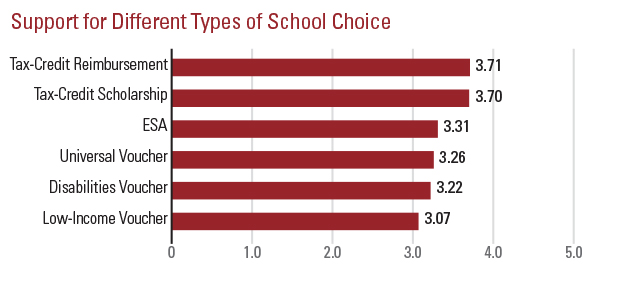American History of the “V” Word
This is Part I in Gerard Robinson’s series on “Vouchers and the Masters of Invention”
As a slogan, freedom of choice has a home in movements ranging from association to abortion. In between those ideological ends are policy proposals focused on housing, food, and education that also rely on choice. In each case, taxpayer dollars play a role. Nevertheless, not every program receives equal treatment. America’s housing, food, and education voucher programs provide an example.
Housing
Section 8 of the U.S. Department of Housing and Urban Development (HUD) provides government housing assistance to lower-income families, many of whom have children. Whether one agrees or disagrees with this program is beside the point, which is: How does the program operate?
Here is what Section 8 does not do: It does not dictate where participants must live; Section 8 enrollees have options. They can even move to other cities and have their funds “follow” them if they choose.
School voucher programs, available in 12 states and Washington, D.C., give parents the ability to access their children’s public education funding to choose an instructional setting they think will be a better fit.
Full disclosure: Section 8 is not even the program’s official name. It actually is called the Housing Choice Voucher Program.
Indeed, the Housing Choice Voucher Program allows families to choose a home based on their family’s unique needs or circumstances, and if what they choose initially does not work, they can use their voucher to try another. Point being, operationally, the government program—regardless of whether one supports or opposes it—provides the freedom to choose.
Food
The Special Supplemental Nutrition Program for Women, Infants and Children (WIC) Program was created by the U.S. Department of Agriculture to help lower-income parents gain access to health and nutritional plans. Like housing assistance, one should focus on how it operates:
WIC does not zone off districts, collect all the applicants that fall in each district and assign one grocery store at which they all must shop. According to its website, WIC works as follows:
“In most WIC State agencies, WIC participants receive checks or vouchers (emphasis added) to purchase specific foods each month that are designed to supplement their diets with specific nutrients that benefit WIC’s target population. In addition, some States issue an electronic benefit card to participants instead of paper checks or vouchers.”
WIC provides people the freedom to choose the grocery store that works best for them.
Education
School voucher programs, available in 12 states and Washington, D.C., give parents the ability to access their children’s public education funding to choose an instructional setting they think will be a better fit.
School voucher programs do not zone off districts, collect all the applicants that fall in each and assign them to one school with one curriculum and one experience. No, but that is what many of our public education systems do every school day.
For some that model is working fine, (though not as well as they may think). For many families, it is not. But when some suggest the families that utilize Housing Choice Vouchers or WIC vouchers should have the freedom to choose in education, government choice suddenly turns cantankerous. Why?
Surely the idea of a “voucher” is not the culprit, right? To date, I have not seen hundreds of parents protesting in front of HUD, or standing inside a state capitol, with signs reading “Stop vouchers: They take money away from public housing!”
From a marketing perspective, polling indicates that the term “voucher” is not as popular as titles of other, similar student-based-funding models (though support does improve once the idea is explained). The figure below is from the Friedman Foundation’s “School Choice Signals” report, with 5 being most favorable and 1 being least favorable:

- “Voucher” does not appear in the title of any education law in the following 13 jurisdictions with a voucher program in place as of March 2014: Douglas County (Colorado), Florida, Georgia, Indiana, Louisiana, Maine, Mississippi, North Carolina, Ohio, Utah, Vermont, Wisconsin, and Washington, D.C.
- Federal and state regulations for Section 8 housing contain the term “voucher” in its text with more regularity than do regulations guiding education voucher programs. The word “voucher” also can be found in WIC’s FAQs.
Still, coalitions against school vouchers do not refer to Section 8 as a voucher program. By contrast, they refer to most (if not all) student-based-funding programs as “vouchers,” even when there is no direct use of taxpayer dollars—be it a tax-credit scholarship program or an education savings account. In some instances a “charter school” has even been labeled a voucher program.
That is because meaning making when it comes to the word voucher is often driven by teams of people like this.
We must turn the tide.
Visit Part II in this series: “Taking Back the ‘V’ Word”




